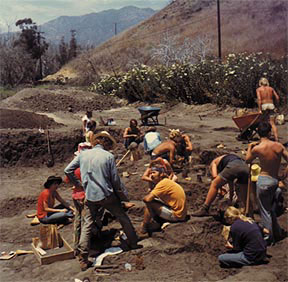The California Mission era (1772-1834 C.E.) is an excellent one for examining the extent to which Spanish Catholic conversion and acculturation efforts were successful in changing Chumash ideology and ritual. I thus selected two related cemeteries, Medea Creek and Malibu, which bracket the contact period, and compared them in order to detect changes as a result of Spanish influence. Analytic techniques encompassed several multivariate statistical and spatial analyses as well as the use of historic and ethnographic data for the Chumash. With these techniques it was determined that, contrary to the popular belief that the Franciscans succeeded in obliterating Native religion, Chumash religion very likely survived the Mission system. Burial contexts, customs, and artifacts all point toward a broad pattern of continuity in Chumash culture, ritual, and religion, although not without specific and significant change. Shifts in patterns of artifact accompaniments as well as the orientation and position of the body in addition to the declining incidence of ritual paraphernalia, particularly public ritual paraphernalia, all speak to change. The similarities in the differential treatment of sub-adults, the traditional form of the cemetery, the predominance of westerly body orientations, the same normative type of interment, and the survival of several other attributes argue for continuity. The archaeological, historic, and ethnographic data taken together suggest not only that Chumash religion survived but that it did so not through conflict with Spanish Catholicism but rather through a selective convergence with it.
(right) The Malibu Historic cemetery was excavated by the UCLA Archaeological Survey from 1971 to 1972. The cemetery was in use from about 1775 to 1805 and contained approximately 140 individuals with 58,000 artifacts. (From the collection of the Fowler Museum of Cultural History)



